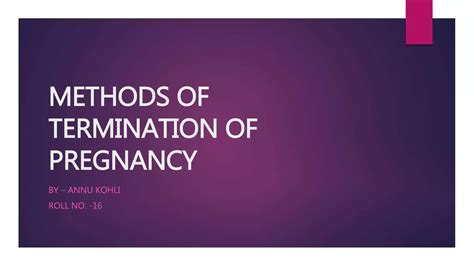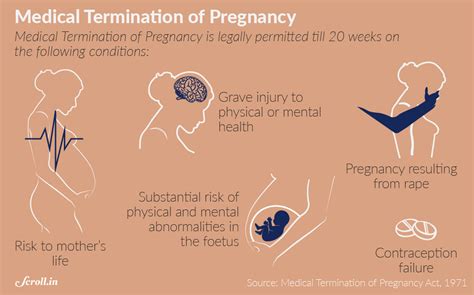Intro
Learn about safe pregnancy termination procedures, including medical abortion, surgical abortion, and post-procedure care, to make informed decisions about reproductive health and womens rights.
Pregnancy termination, also known as abortion, is a complex and sensitive topic that affects many individuals and families worldwide. The decision to terminate a pregnancy is often difficult and personal, and it is essential to approach the topic with empathy and understanding. In this article, we will delve into the various aspects of pregnancy termination procedures, including the different methods, benefits, and risks associated with each.
The importance of discussing pregnancy termination procedures cannot be overstated. With the ongoing debates and controversies surrounding abortion, it is crucial to provide accurate and unbiased information to help individuals make informed decisions about their reproductive health. Moreover, understanding the various procedures and options available can help alleviate anxiety and uncertainty, allowing individuals to make choices that align with their values, beliefs, and circumstances.
Pregnancy termination is a significant public health issue, with millions of individuals undergoing the procedure every year. According to the World Health Organization (WHO), approximately 40% of pregnancies worldwide are unintended, and about 20% of these pregnancies end in abortion. The availability and accessibility of safe and effective abortion services are critical in reducing maternal mortality and morbidity, as well as promoting reproductive health and well-being.
Pregnancy Termination Methods

There are several pregnancy termination methods, each with its benefits and risks. The choice of method depends on various factors, including the gestational age, medical history, and personal preferences. The most common methods include:
- Medical abortion: This involves taking medications to induce abortion, typically up to 10 weeks of gestation.
- Surgical abortion: This involves a minor surgical procedure to remove the embryo or fetus, typically up to 20 weeks of gestation.
- Vacuum aspiration: This involves using a vacuum device to remove the embryo or fetus, typically up to 16 weeks of gestation.
- Dilation and evacuation (D&E): This involves dilating the cervix and removing the embryo or fetus, typically after 16 weeks of gestation.
Medical Abortion
Medical abortion, also known as medication abortion, is a non-surgical method of terminating a pregnancy. It involves taking two medications, mifepristone and misoprostol, which work together to induce abortion. Mifepristone blocks the production of progesterone, a hormone essential for maintaining pregnancy, while misoprostol causes the uterus to contract and expel the embryo or fetus.Medical abortion is a safe and effective method, with a success rate of over 95%. However, it is essential to follow the instructions carefully and attend follow-up appointments to ensure the procedure is complete and safe.
Risks and Benefits of Pregnancy Termination

Like any medical procedure, pregnancy termination carries risks and benefits. The benefits of pregnancy termination include:
- Reduced risk of maternal mortality and morbidity
- Improved reproductive health and well-being
- Increased autonomy and control over reproductive choices
- Reduced risk of unintended pregnancy and abortion-related complications
However, pregnancy termination also carries risks, including:
- Infection and sepsis
- Bleeding and hemorrhage
- Damage to the uterus or cervix
- Emotional and psychological distress
It is essential to discuss the risks and benefits with a healthcare provider to make an informed decision about pregnancy termination.
Emotional and Psychological Aspects of Pregnancy Termination
Pregnancy termination can be a complex and emotionally challenging experience. Individuals may experience a range of emotions, including relief, guilt, sadness, and anxiety. It is essential to acknowledge and validate these emotions, rather than dismissing or minimizing them.Support from healthcare providers, family, and friends can play a critical role in helping individuals cope with the emotional and psychological aspects of pregnancy termination. Counseling and therapy can also provide a safe and confidential space to process emotions and work through challenges.
Pregnancy Termination Laws and Policies

Pregnancy termination laws and policies vary widely across countries and jurisdictions. Some countries have liberal laws and policies, allowing individuals to access abortion services without restriction, while others have restrictive laws and policies, limiting access to abortion services.
The availability and accessibility of abortion services are critical in reducing maternal mortality and morbidity. Restrictive laws and policies can lead to unsafe and clandestine abortions, increasing the risk of complications and deaths.
International Perspectives on Pregnancy Termination
Pregnancy termination is a global issue, with different countries and cultures having unique perspectives and approaches. In some countries, abortion is seen as a fundamental human right, while in others, it is viewed as a moral or ethical issue.Understanding international perspectives on pregnancy termination can help promote dialogue and cooperation, as well as inform policies and practices that prioritize reproductive health and well-being.
Pregnancy Termination and Reproductive Health

Pregnancy termination is closely linked to reproductive health and well-being. Access to safe and effective abortion services is essential for promoting reproductive health, reducing maternal mortality and morbidity, and improving overall well-being.
Reproductive health encompasses a range of issues, including:
- Family planning and contraception
- Maternal and child health
- Sexually transmitted infections (STIs) and HIV
- Reproductive tract infections (RTIs) and cervical cancer
Addressing these issues requires a comprehensive and integrated approach, one that prioritizes reproductive health and well-being.
Future Directions in Pregnancy Termination
The future of pregnancy termination is likely to be shaped by advances in medical technology, changes in laws and policies, and shifting societal attitudes. Some potential future directions include:- Increased access to medical abortion and other non-surgical methods
- Improved counseling and support services for individuals undergoing pregnancy termination
- Enhanced training and education for healthcare providers
- Increased focus on reproductive health and well-being, rather than just pregnancy termination
By prioritizing reproductive health and well-being, we can promote a more comprehensive and inclusive approach to pregnancy termination, one that acknowledges the complexity and nuance of this issue.
What are the different methods of pregnancy termination?
+There are several methods of pregnancy termination, including medical abortion, surgical abortion, vacuum aspiration, and dilation and evacuation (D&E).
What are the risks and benefits of pregnancy termination?
+The benefits of pregnancy termination include reduced risk of maternal mortality and morbidity, improved reproductive health and well-being, and increased autonomy and control over reproductive choices. However, pregnancy termination also carries risks, including infection and sepsis, bleeding and hemorrhage, and emotional and psychological distress.
How do I access pregnancy termination services?
+Access to pregnancy termination services varies widely depending on the country, jurisdiction, and healthcare system. It is essential to consult with a healthcare provider or a reputable organization to determine the available options and services in your area.
In conclusion, pregnancy termination is a complex and multifaceted issue that requires a comprehensive and nuanced approach. By understanding the different methods, risks, and benefits, as well as the emotional and psychological aspects, we can promote a more informed and empathetic discussion around this topic. We invite you to share your thoughts, ask questions, and engage in a respectful and constructive dialogue about pregnancy termination and reproductive health. Together, we can work towards promoting a more inclusive and supportive environment for individuals to make informed choices about their reproductive health and well-being.
